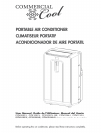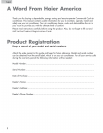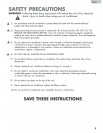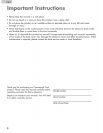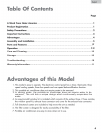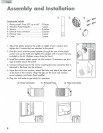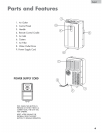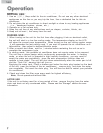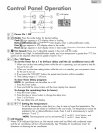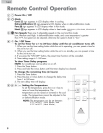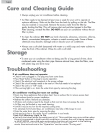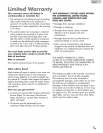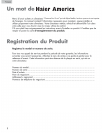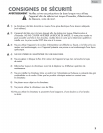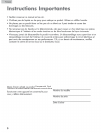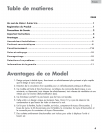
BEFORE USE:
1. Use an 115V, 15Amp outlet for the air conditioner. Do not use any other electrical
appliances on this line or you may trip the fuse. Use a dedicated line for this air
conditioner.
2. Do not place the air conditioner in direct sunlight or close to any heating appliances
(i.e.,
baseboard
heaters, stoves, etc.)
3. Operate on a flat surface only.
4. Keep the unit free of any obstructions such as drapes, curtains, blinds, etc.
5. Keep unit at least 1 foot away from the wall.
DURING USE:
1. When turning on the unit for the first time after plugging it into an electrical outlet,
the unit will start in a low fan cooling mode. The temperature display on the LCD
will show the current room temperature. When turning on the unit during regular usage
,it will remember the last setting used. If you want to operate the air conditioner as a
dehumidifier, then adjust to dehumidification mode.
2.
After a normal shut down, wait for 3 minutes before restarting the unit so as to
complete the compressor cycle.
3. In cooling mode, this portable air conditioner does not require
water to be removed.
The unit has a unique design which continuously evaporates the water. In heating
mode, or when the unit is operated in high humidity conditions, you may need to
empty the water pan periodically, since the auto-evaporation function does not
operate in heat mode. The unit will shut down automatically when the water pan is full
and the "T
ank
Full" warning light will turn on.
Emptying the water tank: Place a shallow pan below the drain plug located on the back
of the unit (near the bottom of the air conditioner), remove plug,
and drain the water
pan completely. Re-insert the drain plug. You
will then be able to restart your portable
air conditioner.
4. Check and clean the filter once every week for highest efficiency.
Note: Do not operate unit without filter.
AFTER USE
If the unit is not being used for a long period of time, remove the plug from the water
drain and drain out any condensed water. Please see the ”Storage" section for more
information.



